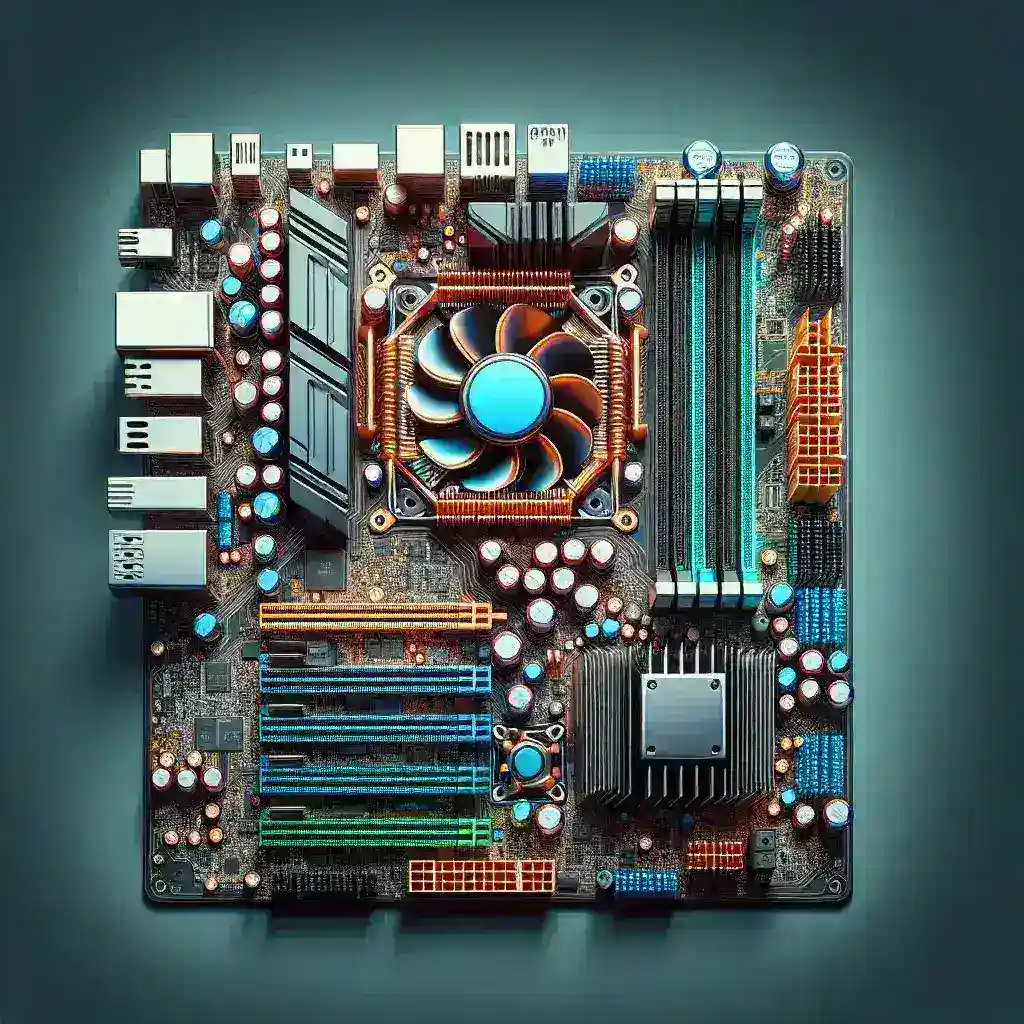Active VRM (Voltage Regulator Module) cooling on motherboards is a topic of pivotal importance, particularly for enthusiasts seeking high-end performance and stability. This article delves into why some motherboards are designed with active VRM cooling, covering its essential functions, benefits, and its overall impact on system performance.
Understanding VRMs and Their Role
Voltage Regulator Modules (VRMs) are critical components on a motherboard. They serve the purpose of regulating the voltage supplied to the CPU, ensuring a stable and consistent voltage level. VRMs convert the higher voltage from the power supply to a lower voltage suitable for the CPU and other core components. Here are the main reasons why VRM cooling is crucial:
- Stability: Prevents voltage fluctuations that could lead to system instability.
- Performance: Ensures consistent performance, especially during high workload scenarios.
- Longevity: Prolongs the lifespan of the motherboard and CPU by preventing overheating.
Why Active Cooling?
Passive cooling has been a standard choice for VRMs; however, the shift towards active cooling is driven by multiple factors:
| Passive Cooling | Active Cooling |
|---|---|
| Relies on heat sinks | Uses fans or liquid cooling |
| Limited efficacy in high temperatures | Efficient heat dissipation |
| Quieter operation | May generate noise |
Performance Enhancement
Active VRM cooling enables motherboard manufacturers to push the boundaries of performance. High-end CPUs, particularly those overclocked, generate significant amounts of heat. Active cooling maintains optimal thermal conditions, facilitating higher clock speeds without compromising stability.
Improved System Reliability
Heat is a silent killer for electronic components. By incorporating active cooling solutions, manufacturers can ensure that the VRMs remain within safe operational temperatures even under heavy load. This results in improved system reliability and a longer lifespan for critical components.
The Rise of Overclocking
Overclocking has become a mainstream activity among PC enthusiasts and gamers. By overclocking, users push their hardware beyond its rated specifications to extract additional performance. However, this practice significantly increases power consumption and heat generation, particularly affecting the VRMs. Active VRM cooling is crucial in handling the additional thermal load and ensuring system stability.
Liquid Cooling Solutions
Some high-end motherboards now feature integrated liquid cooling solutions for VRMs. These systems offer superior cooling performance compared to traditional air cooling. They are particularly beneficial for systems where CPU and GPU are already liquid-cooled, maintaining a consistent and efficient cooling loop throughout the system.
Benefits of Active VRM Cooling
Enhanced Overclocking Potential
Active VRM cooling provides a stable thermal environment, essential for maintaining higher clock speeds safely. Overclockers can benefit from increased performance without risking system instability or hardware damage.
Extended Hardware Lifespan
Efficient cooling reduces thermal stress on VRMs and other motherboard components. This can lead to a longer lifespan for both the motherboard and the CPU, protecting the user’s investment over time.
Improved System Performance
With active VRM cooling, systems can sustain peak performance for more extended periods without thermal throttling. This is beneficial for intensive tasks such as gaming, video editing, and 3D rendering.
Reduced Thermal Throttling
Thermal throttling occurs when components reduce their performance to avoid overheating. Active VRM cooling helps maintain lower temperatures, reducing the likelihood of thermal throttling and ensuring consistent performance.
Types of Active VRM Cooling
- Fan-Based Cooling: Small fans are mounted directly onto VRM heat sinks to actively dissipate heat.
- Hybrid Cooling: Combines air and liquid cooling to achieve efficient thermal management.
- Liquid Cooling Blocks: High-end systems use liquid cooling blocks to integrate VRMs into the main cooling loop.
Considerations When Choosing a Motherboard
When selecting a motherboard, especially for high-performance use cases, evaluating the VRM cooling solution is critical. Here are a few considerations:
- Intended Use: Overclocking and high-performance computing require robust cooling solutions.
- System Noise: Active cooling solutions may introduce additional noise; however, the trade-off for performance might be worth it.
- Budget: High-end cooling solutions typically come at a premium; evaluate based on your performance requirements and budget.
Conclusion
The shift towards active VRM cooling in motherboards is driven by the need for higher performance, increased system reliability, and the rise of overclocking practices. By maintaining optimal thermal conditions, active VRM cooling ensures that modern motherboards can handle the demands of high-end CPUs and GPUs, providing enhanced performance and longevity. When choosing a motherboard, considering the VRM cooling solution is critical, especially for those looking to push their systems beyond standard specifications.

